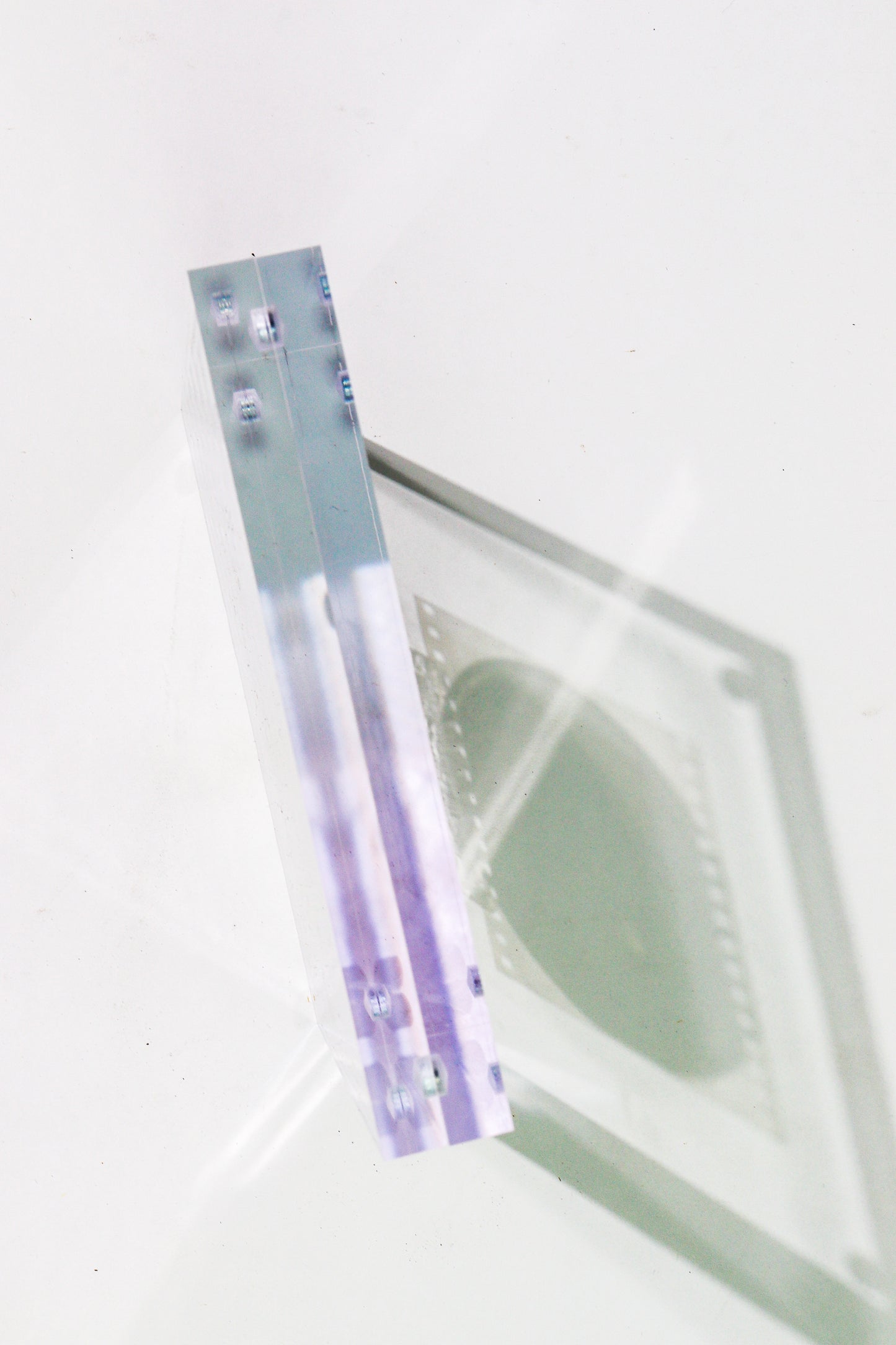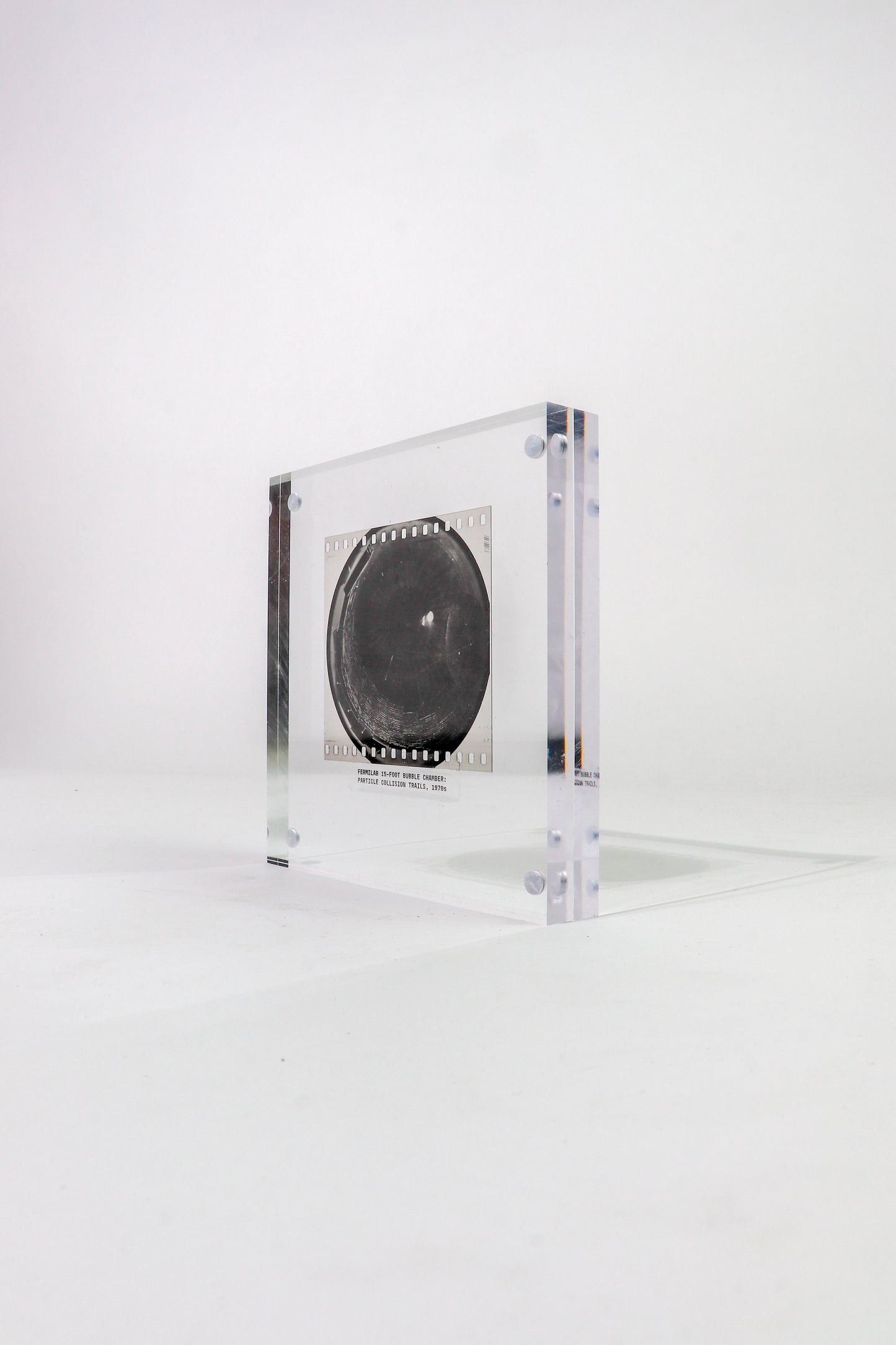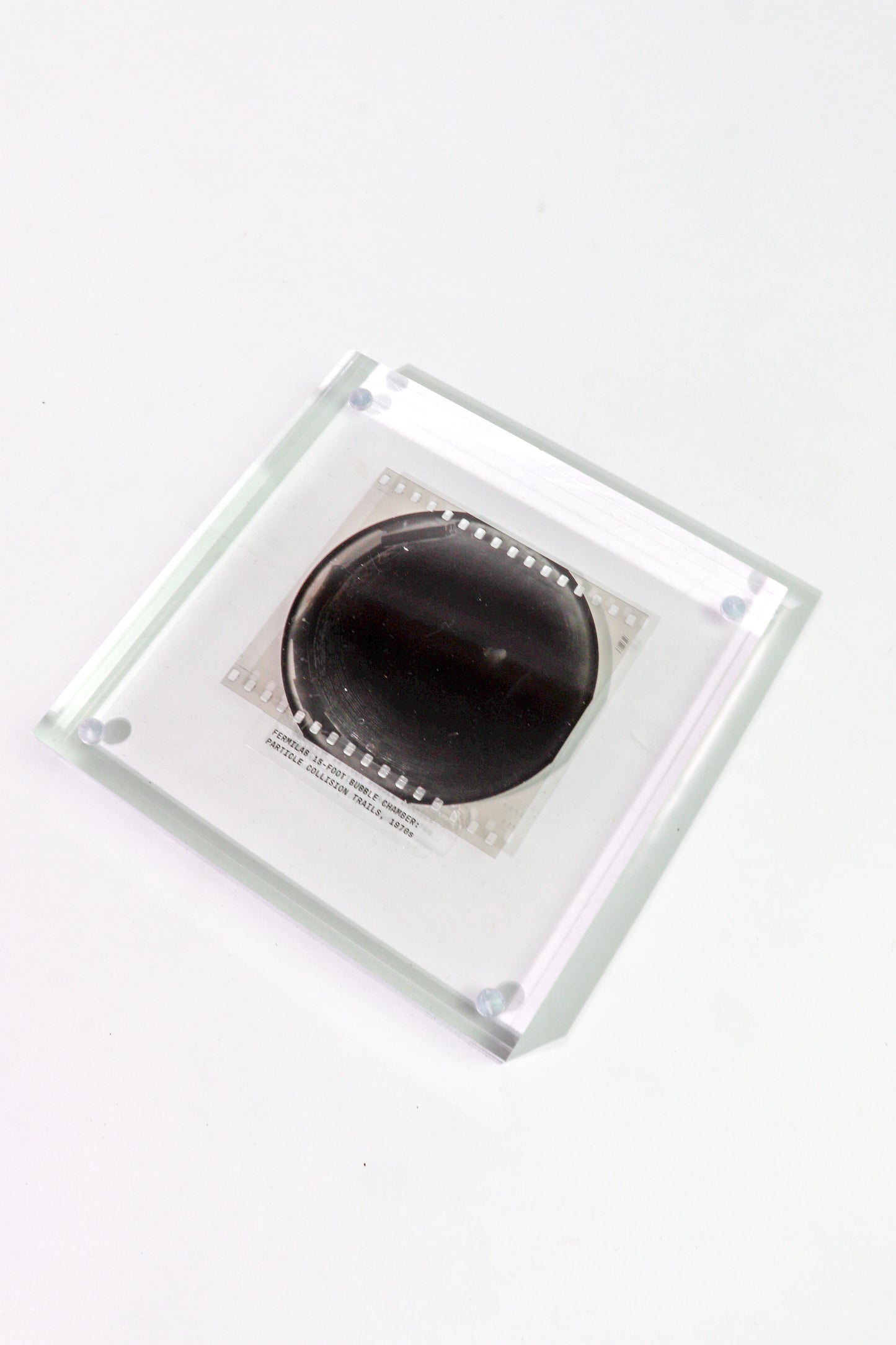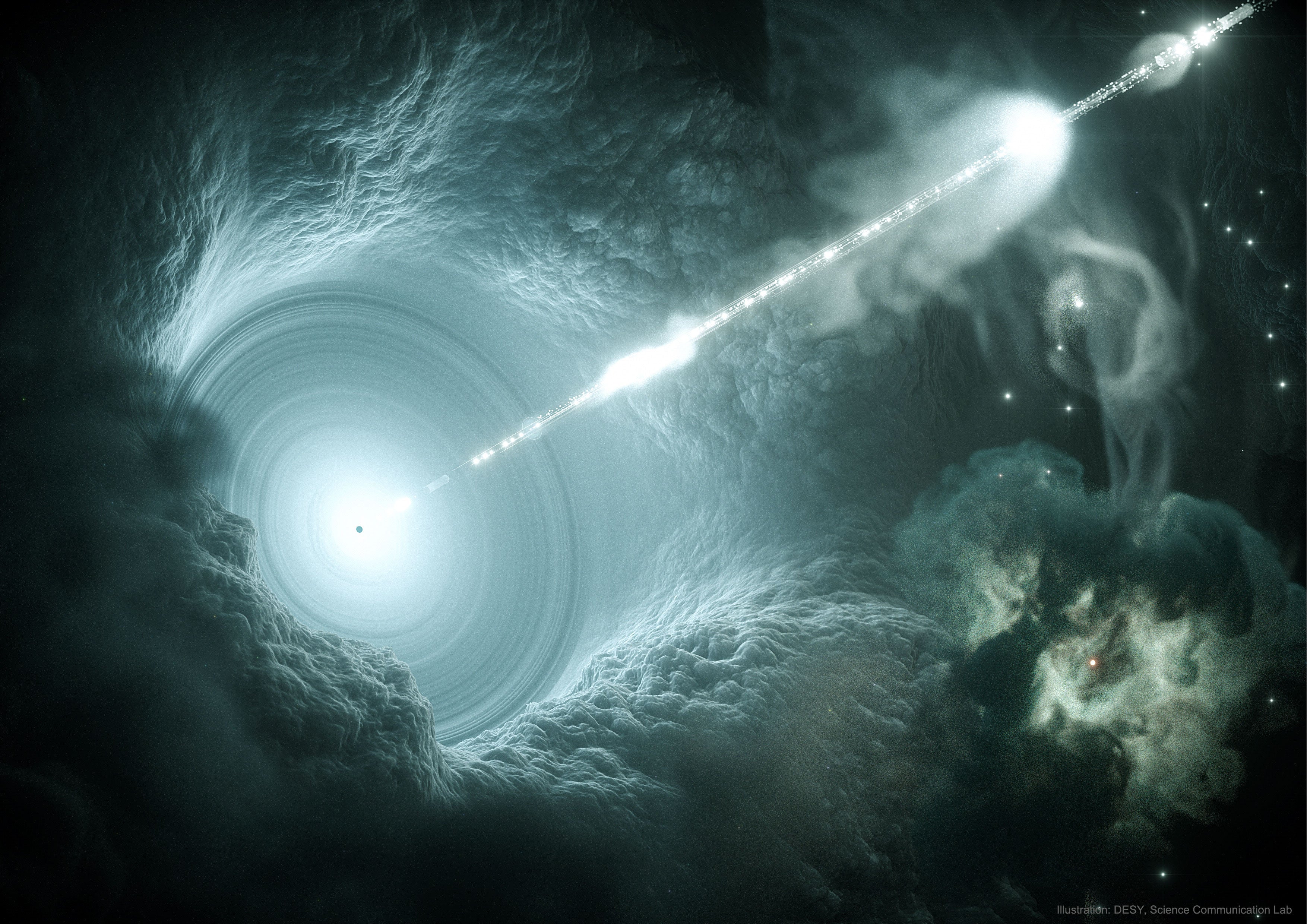Fermilab Bubble Chamber Particle Collision Photo
Fermilab Bubble Chamber Particle Collision Photo
Matter Subscriber Price:
Couldn't load pickup availability
- Certificate of Authenticity
- Robust Display Frame
- Individually Numbered
Fragments of the Universe: Inside Fermilab's 15-Foot Bubble Chamber
This frame of photographic film captures a rare glimpse of exotic subatomic processes that were unleashed within Fermilab’s legendary 15-Foot Bubble Chamber.
Built in the early 1970s, this colossal detector was a marvel of particle physics, filled with liquid hydrogen (at -253°C, only 20 degrees above 0 Kelvin), poised on the edge of boiling by displacement of a giant piston in 1/60th of a second, which superheated the entire 380 thousand liters of fluid. Right at this moment, a beam of neutrinos, at relativistic energies near the speed of light, was directed into the chamber where some collided with the hydrogen nuclei.
Each wisp represents the trajectory of a charged subatomic particle, marked by bubbles that formed where the energetic particle had ripped electrons off hydrogen atoms, creating a string of ions, each becoming a nucleating point for a bubble to form. The liquid-to-gas phase transition is a natural amplifier, allowing the atomic-level events of ionization to become a macroscopic bubble, visible to a camera, and revealing the presence of the trajectories.
The chamber was also subjected to an intense magnetic field, forcing the charged particles into curved paths that further revealed their speed and charge (+ or -). The images of these collisions thus allowed physicists to reconstruct what happened and what new exotic matter was created, and develop insights into the fundamental forces that govern matter, revealing the behaviors and interactions of quarks, charged leptons, and neutrinos, with astonishing clarity.
This photographic frame is an actual data point used in an experimental analysis, a preserved moment of discovery, and a visual testament to humanity’s creativity in pursuit of understanding the deepest mysteries of the universe.
Bonus: This film not only has images of matter, the anti-spirals are actually antimatter! Other than cosmic ray muons, the most abundant antimatter on earth comes from beta + decay from potassium K40. Fun fact: A 3 Oz container of Morton Salt Substitute (KCl) would emit about 1 positron per minute.
Includes one original photo in an acrylic display, plus info card & certificate of authenticity.
More photos coming soon!
 Matter Item #394
Matter Item #394










Shop collections containing this item:
@physicsfun Featured Products Historic Artifacts In Stock Matter Items Newest Listings Nuclear Physics Physics Quantum Physics Stemcell Catalog Storewide

AUTHENTICITY GUARANTEED
We only list 100% verified authentic items. We work with reputable collectors, and regularly consult with our network of scientists and experts.
-
Free Shipping
Spend $50 to qualify for free US shipping
-
Secure Payments
Pay how you like: Credit card, PayPal, After Pay, Shop Pay, Venmo, Apple/Google/Meta Pay & crypto
-
Simple Returns
Change your mind? No problem. Enjoy easy returns within 30 days.
WE TAKE SCIENCE SERIOUSLY
You deserve better than craft store science products. And we think learning is more impactful when you're holding a tangible piece of what you're learning about. That's why Stemcell exists.
We're dedicated to providing the best scientific products available—whether they're fragments of scientific importance, experimental activities, or just interesting things that scratch your curiosity itch.
With every new product launch, our list of new ideas gets longer rather than shorter. So check in often for our latest projects, and thanks for being a part of our endeavor to make the world a smarter place to live.
Believe in yourself; for everything else, there's science.
— TERRY MUDGE, FOUNDER & SCIENTIFIC DIRECTOR









